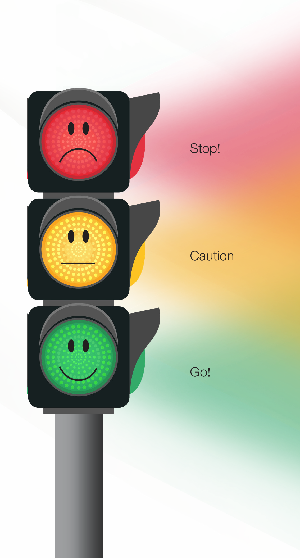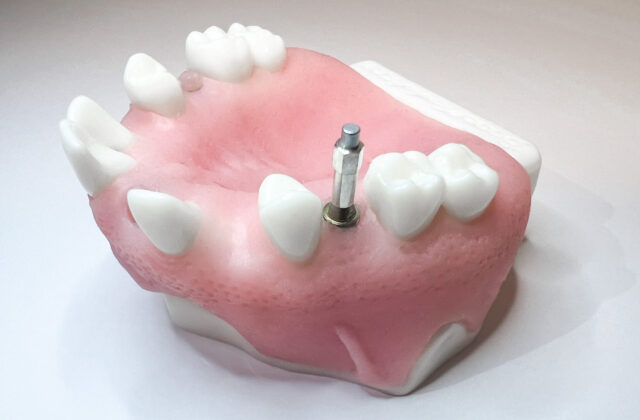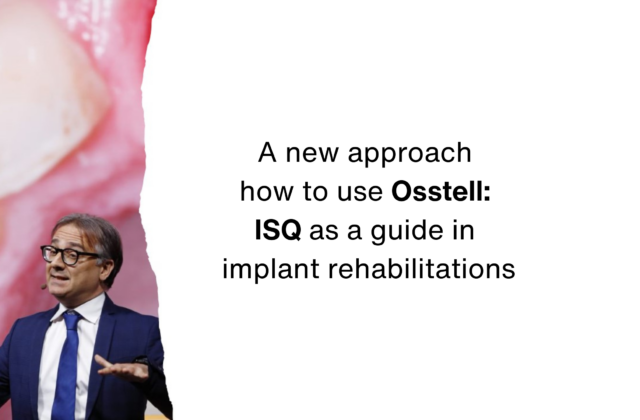
Red – Stop! Why ISQ < 60 means it is time to protect the implant
Aug 29, 2025
This is the first in a three-part blog series exploring the Osstell ISQ scale and its role in clinical decision-making. Each post focuses on one of the three color-coded zones — red, yellow, and green — that guide clinicians in assessing implant stability. In this first post, we dive into the red zone, where an ISQ value below 60 signals a need for caution and healing time.
In implant dentistry, stability is the foundation of success. The Osstell ISQ scale, backed by over 1500 scientific studies, provides a reliable, objective way to assess implant stability. When the Osstell Beacon lights up red — indicating an ISQ value below 60 — it’s not just a number. It is a clear signal to stop and give the implant time to heal.
Red – Stop!
The red zone on the Osstell ISQ scale is ISQ < 60. This article focuses on how clinicians should respond when encountering a red measurement at the time of implant placement. Based on current evidence, we outline recommended protocols to support osseointegration and reduce the risk of failure. We will also briefly touch on what a persistently low ISQ value after the healing period may indicate, and how to interpret such findings in clinical practice.
The power of colour: Making dental implant stability intuitive
The Osstell Beacon simplifies complex data into a visual guide. Its traffic light system — red, yellow, green — helps clinicians make informed decisions and at the same time, makes it easier for patients to understand their treatment journey. Red means no. Green means go.
Red means the implant is not ready for loading. It’s a moment to protect, not to proceed.
What the evidence tells us about ISQ < 60
1. Low ISQ at surgery requires extra caution
A comprehensive review of 20 years of clinical experience with resonance frequency analysis (RFA) emphasizes that implants with ISQ values below 60 are at higher risk of failure if prematurely loaded. Healing time is critical to allow biological stabilization. Ref 1.
Recommendation: Avoid 1-stage surgery and allow for undisturbed healing.
2. Micromovements disrupt healing
Rodrigo et al. (2010) demonstrated that low ISQ values are associated with increased micromovements, which can disrupt osseointegration and lead to implant failure. This underscores the importance of achieving sufficient primary stability before loading. Ref 2 and Ref 3.
3. Two-stage surgery offers better outcomes
Clinical observations published in the Italian journal JOB (2010) suggest that implants with persistently low ISQ values after the healing period may indicate compromised osseointegration. While a low ISQ at placement can still lead to success with proper management, a low ISQ after healing is often a warning sign. Ref 3.
4. Low ISQ after healing may indicate failure
Clinical observations published in the Italian journal JOB (2010) suggest that implants with persistently low ISQ values after the healing period may indicate compromised osseointegration. While a low ISQ at placement can still lead to success with proper management, a low ISQ after healing is often a warning sign. Ref 2.
Evidence-based recommendations for ISQ < 60
At the time of surgery, if ISQ < 60:
- Stop and reassess. The implant can still succeed, but it requires a cautious and evidence-based approach.
- Use a two-stage surgical protocol to protect the implant during healing.
- Follow a conventional loading protocol — wait at least 2 months before restoration.
- Re-measure ISQ before final restoration to confirm biological stability.
These steps together represent a conservative approach — essential when managing implants with low primary stability.
If ISQ < 60 is measured after the healing period:
- Consider the possibility of a failing implant.
- Evaluate clinical signs and radiographic findings.
- Provide additional healing time and take follow-up ISQ measurements.
Helping patients understand
The red light on the Osstell Beacon is more than a clinical tool — it is a communication aid. When patients see red, they understand that waiting is part of a safe, evidence-based plan. This builds trust and helps manage expectations.
To further support clinical decision-making and patient communication, the software included with the Osstell Beacon — OsstellConnect — can be used to track and visualise ISQ trends over time. The software helps clinicians evaluate implant stability development and provides a clear, structured way to explain the treatment process to patients.
Don’t guess. Measure.
By sharing visual progress and data-driven insights, clinicians can keep patients informed, engaged, and confident throughout the healing phase.
Summary

Red – Stop!
Yellow – Caution
Green – Go!
When the ISQ value is below 60, the message is clear: Stop! The red zone is not necessarily a setback — it is a signal to protect the implant and allow for healing.
By following the science and respecting the healing process, clinicians can often improve outcomes and achieve long-term success with ISQ guidance.
References
1: Sennerby L. 20 Jahre Erfahrung mit der Resonanzfrequenzanalyse. KVM, 2013 (Available in German only.)
2: Rodrigo D, Aracil L, Martin C, Sanz M. Diagnosis of implant stability and its impact on implant survival: a prospective case series study. Clinical Oral Implants Research, 2010.
3: Trisi P, Implant Stability Quotient (ISQ) vs Direct in Vitro Measurement of Primary Stability (Micromotion): Effect of Bone Density and Insertion Torque. Journal of Osteology and Biomaterials, 2010.
Read more about and download the Osstell ISQ scale here.

You can find the other two blog posts in this series here:
Yellow – Caution! Why ISQ 60–69 requires careful evaluation – Osstell®
Green – Go! Why ISQ > 70 means you can proceed with confidence – Osstell®



Add comment